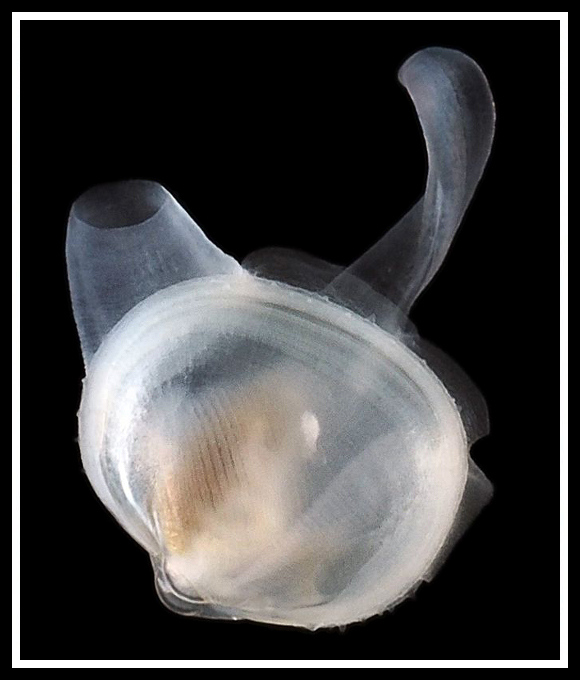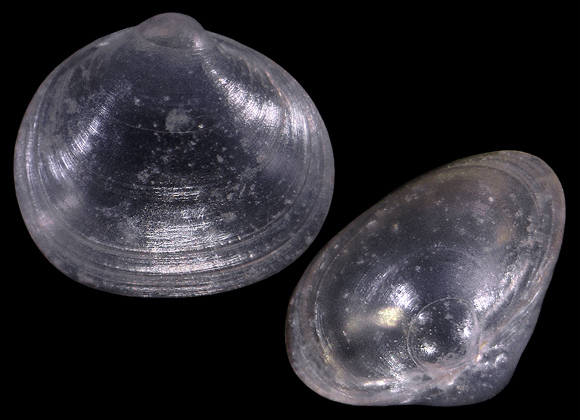
Arctic to NE. Pacific, Gulf of Mexico, Angola, Mediterranean. « Intertidal and sublittoral around all coasts, occasional records from offshore shelf. In crevices, borings and in dead shells mostly associated with muddy gravel. » (MBSBI). Often attached to the substract by a strand of byssal threads (cf. video on this page on the Granada University website).
Original taxon: Mya suborbicularis.
« Mya with a sub-pellucid, sub-orbicular shell, of a yellowish-white colour, frequently covered with a brown epidermis ; faintly striated transversely, somewhat glossy ; margin opposite the hinge nearly strai[gh]t; sides nearly equal, rounded. Hinge central. Beak small, pointed, turning to one side. In one valve a single tooth immediately under the beak, locking into a double one in the opposite valve ; with a laminated tooth behind the beak in each, somewhat remote. Inside glossy-white. Valves shut close. » – G. Montagu: Testacea Britannica, London 1803, via BHL.
Secche della Meloria, Livorno, Toscana, W. Italy. 9,5mm.
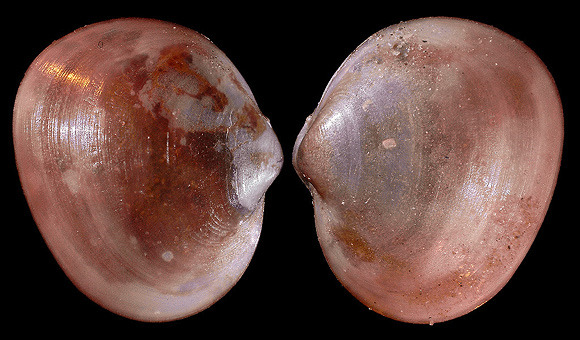
30m deep, Almería, Andalucia, S. Spain. 5,9mm.
« We first discovered this species in hard lime-stone at Plymouth, fragments of which were thrown upon the beach perforated in all directions ; the entrance of these excavations were much smaller than the shell, so that it must have entered in a younger state ; and from which it never could recede. It is sometimes dredged up in Salcomb-bay, detached from any other substance, so that it does not seem to be a Borer in all situations. Perhaps it does not enter any thing but lime-stone, which is not to be found in this last place. » – op. cit.

« An examination of a large number of specimens, so closely united by exact links that their specific identity is irrefragable, demonstrates that […] the outline of this Kellia may vary from subrhombic, with the distance from the anterior to the posterior extremity greatly exceeding that from the beaks to the opposite margin, to triangularly orbicular, with the breadth surpassing the length, which latter outline is necessarily accompanied by a greater declination of the dorsal edges. The ordinary shape, then, is subrhombic, with the angles softened down… » – Forbes & Hanley: op. cit, vol. II p. 87-88.
These drawings clearly show the byssal threads.
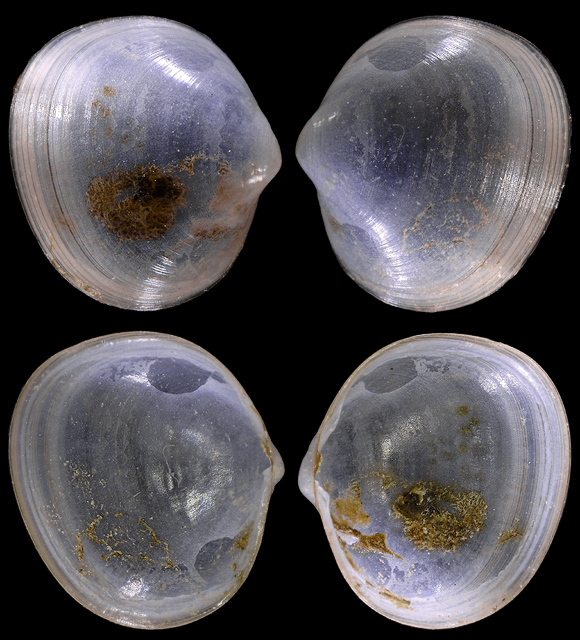
50-60m deep, Gibraltar Strait. 5,7mm.
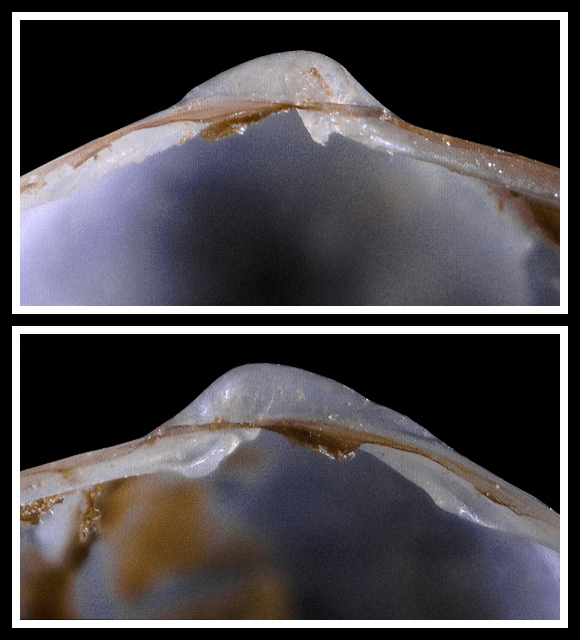
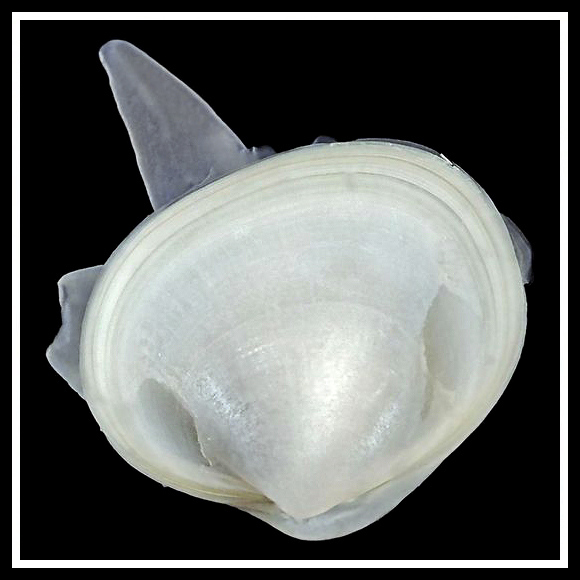
– (CC BY-NC-SA) –
